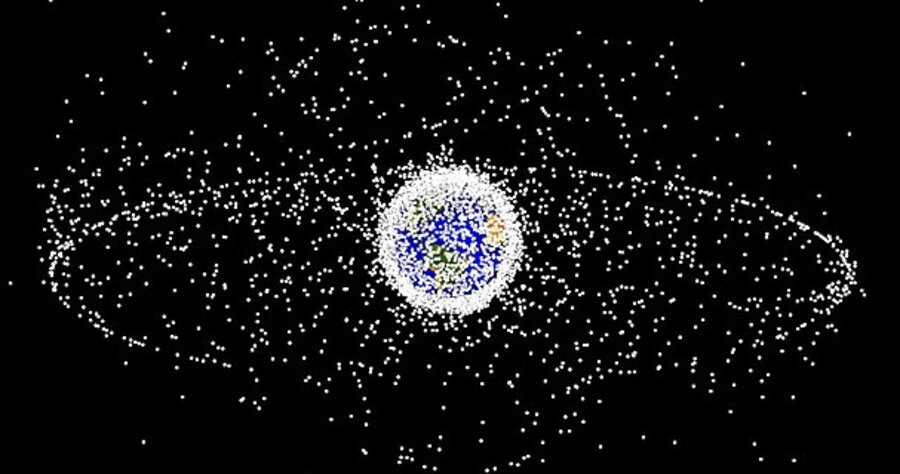Space junk poses threat to Hubble mission
Loading...
Next month's Space Shuttle Atlantis mission to repair the Hubble telescope faces an increased risk of a collision with debris because it will take place in a higher, more littered orbit than usual, the National Aeronautics and Space Administration said Monday.
The environment where the Hubble orbits, about 350 miles above the Earth's surface, has more debris than where the International Space Station orbits and where most shuttle missions are conducted, at about 210 miles above the Earth. This "space junk" includes defunct satellites and spent rocket stages, fragments from exploded satellites, rocket engine effluents, paint flakes, and other small particles – all traveling at speeds of more than 15,000 miles per hour.
According to the Associated Press, NASA estimates that 1 in every 300 shuttle missions to the space station can expect to be destroyed by a collision with a piece of orbital debris. For missions to the Hubble, the risk increases to 1 in 185. NASA's usual limit is 1 in 200; odds higher than that require a signoff from the highest levels of the space agency's management.
The Atlantis is scheduled to launch on October 10, with seven astronauts aboard. It will be the 124th shuttle flight.
In the half century since the launch of Sputnik, the Earth has become surrounded with orbital detritus for thousands of miles in every direction. NASA's Orbital Debris Program Office has counted about 17,000 objects larger than 10 centimeters, and it estimates that there are more than 200,000 particles between one and 10 centimeters. The number of particles smaller than a centimeter likely exceeds tens of millions. NASA says that debris shields can protect a spacecraft from particles as large as one centimeter.
The problem of space junk is particularly insidious because objects in orbit that strike debris tend to create more debris, thereby increasing the risk of future impacts, which would in turn create more debris. This potential runaway feedback effect could create what's known as the Kessler Syndrome, a scenario proposed by NASA consultant Donald Kessler, in which space travel, and even the use of satellites, becomes impracticable because of the high risk of collision.
Space debris also poses hazards to nonastronauts. In 2006, a Chilean airliner carrying 270 passengers came within 35 seconds of colliding with a derelict Russian satellite that was plummeting into the Pacific faster than the speed of sound.
Perhaps the most notorious instance of falling space debris occurred in July 1979, when Skylab, the US space station launched in 1973, fell back to Earth. The 100-ton space station broke up, with large chunks of it landing in near the town of Esperance, Australia. Local authorities fined the US government $400 for littering. To this day, the fine remains unpaid.





